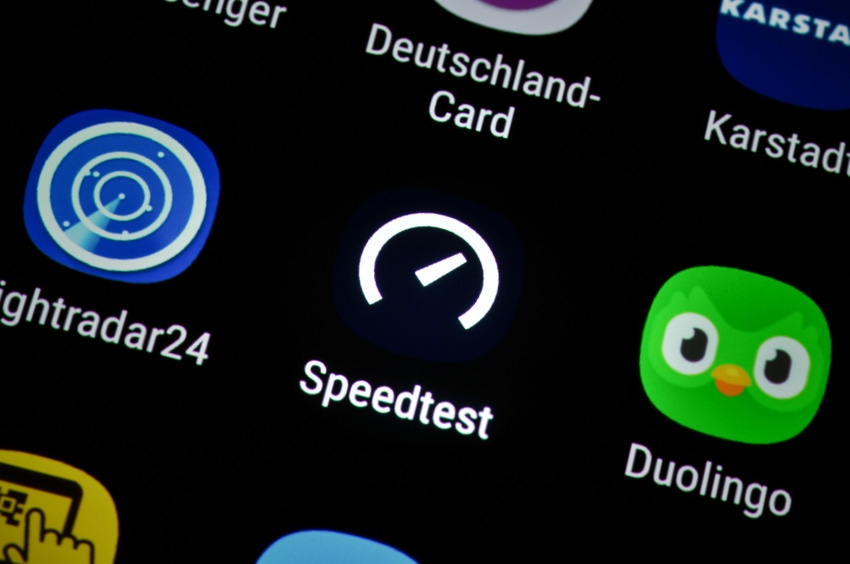A look at the capacity and latency of midband 5G
New findings from Ookla show 5G download speed gains thanks to midband spectrum. But now eyes are turning to other networking aspects like upload speeds, latency speeds and overall network capacity.

It's well understood that the combination of midband spectrum and 5G can dramatically increase mobile customers' download speeds. But two new studies – one from Ookla and one from New Street Research – help to highlight additional considerations, including upload speeds, latency and overall network capacity.
The findings indicate that 5G network operators may yet have more work in front of them.
"It's very clear that US cellular providers are prioritizing improvements in download performance," wrote Ookla's Mark Giles. The company manages the popular Speedtest app and uses network-monitoring data from that app and other apps to develop a view into the performance of telecom systems broadly, including 5G in the US and elsewhere.
In a new post to Ookla's website, Giles explained that 5G network operators in the US – specifically T-Mobile, AT&T and Verizon – may eventually turn their attention away from juicing their download speeds.
"Over time ... we expect the relative importance of upload and latency performance to grow, as 5G download performance begins to exhibit diminishing marginal returns, and increasing importance is given to improving the experience of latency-sensitive use cases such as video calling, mobile gaming and augmented reality," Giles writes.
In its new report on 5G network performance in the US, Ookla found that 5G download speeds continue to rise as US network operators put additional midband spectrum – including C-band, 2.5GHz and 3.45GHz – into action. But the firm reported that operators' upload and latency speeds aren't improving at the same pace.
The findings
In terms of pure 5G median download speeds, Ookla reported that T-Mobile remains in the lead with measurements exceeding 250 Mbit/s. Verizon comes in second with speeds just below that, while AT&T comes in third with median download speeds just below 150 Mbit/s.

Click here for a larger version of this image.
Interestingly, Ookla also reported that all the operators' net promoter scores (NPS) have increased as their download speeds rise.
According to the firm, those overall increases have helped improve the US's position in relation to 5G download speeds in other countries around the world. The firm said the US now ranks 11th on its Speedtest Global Index, up from 20th place a year ago.
But upload speeds and latency speeds have remained relatively stagnant amid that rise in download speeds. Upload speeds are important for customers who might be loading their videos onto social media, for example, while latency helps determine the speed at which a users' Internet request – clicking on a web page, for example – might be answered.
5G upload speeds in the US generally sit around 10-15 Mbit/s, while latency sits between 40-60 ms, according to Ookla.
The capacity question
Upload, latency and download speeds are all tied to an operator's overall network capacity. In general, the more capacity a network operator commands, the faster speeds they can offer. However, that calculation is directly affected by the number of customers using that operator's network, and what they do with their connections. Lots of heavy data users can cut into a network operator's overall capacity, thus dragging down speeds for all customers on that network.
The question of capacity is particularly important when it comes to fixed wireless access (FWA) services. Verizon, T-Mobile and AT&T are all pursuing FWA businesses by beaming stationary 5G signals into customers' homes and offices – thereby directly challenging wired Internet service providers like Comcast and Charter Communications.
Verizon has said it will ultimately gain 4-5 million FWA customers by 2025, while T-Mobile expects to gain 7-8 million by that time. However, officials from both companies have hinted that they might expand their FWA growth targets beyond those figures.
"There is an assumption that carriers will increase targets, though this assumption may be wrong. If they do increase, it probably won't be by much," wrote the financial analyst at New Street Research in a recent note to investors.
The analysts calculated that T-Mobile, Verizon and AT&T currently budget on enough network capacity to support a total of roughly 16 million fixed wireless customers. But they may tweak their calculations to grow that number.
"If carriers narrowed the 'margin of safety' in capacity calculations, they might be able to increase FWA targets from 16 million to 19 million," the analysts wrote. "A significant change in network technology or spectrum availability would be required to increase capacity by more under the current model; neither is likely in the next 5 years."
After all, the introduction of midband spectrum into the US market – and the network capacity it creates – directly contributed to the rise of FWA on 5G.
The New Street analysts also acknowledged that US 5G operators could expand their FWA businesses by using millimeter wave spectrum to tackle multiple-dwelling units (MDUs, or apartments). Verizon has already suggested it will do so later this year.
"Carriers could change the model by using millimeter wave spectrum to target MDUs, though we believe this strategy would be slow and costly to implement," the New Street analysts wrote.
Read more about:
OoklaAbout the Author(s)
You May Also Like


.jpg?width=700&auto=webp&quality=80&disable=upscale)











